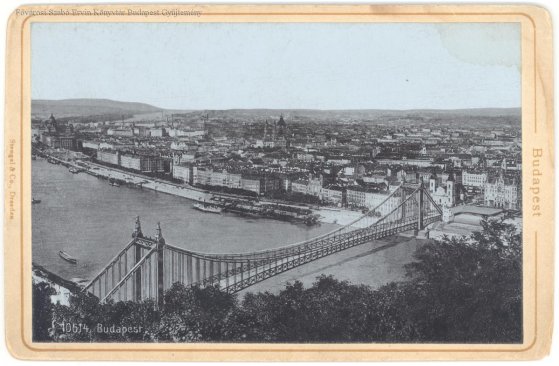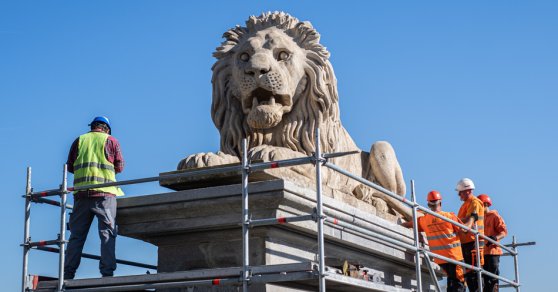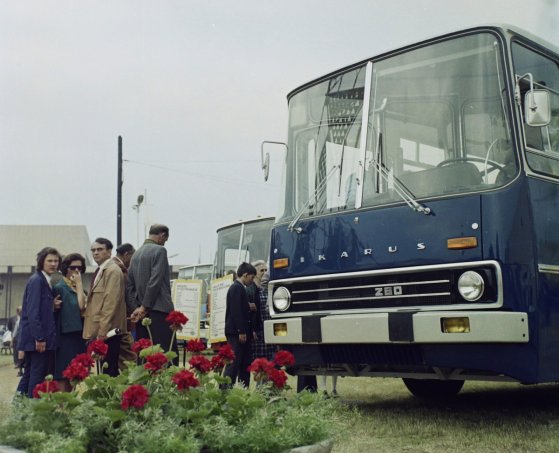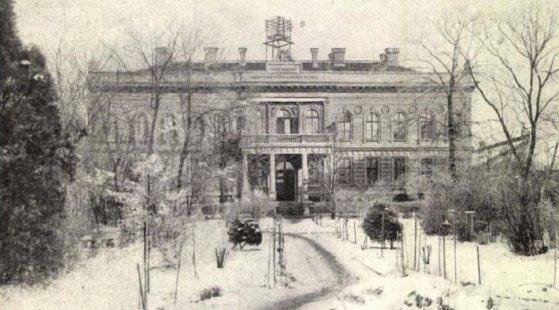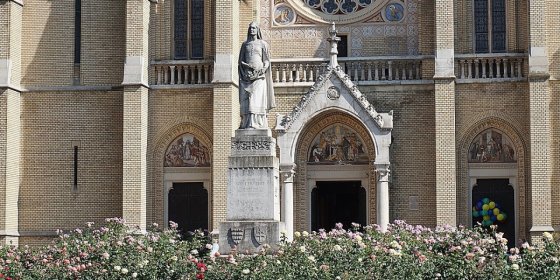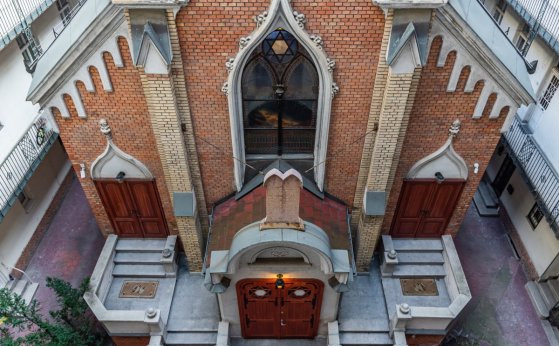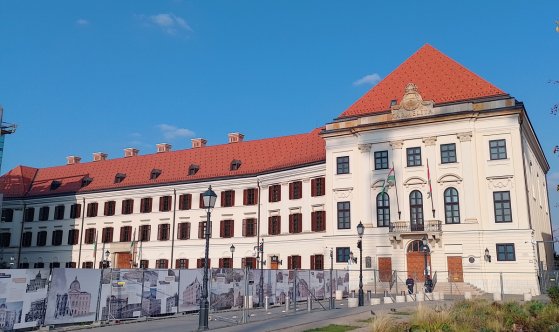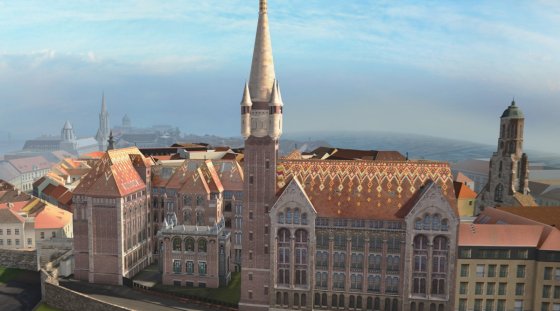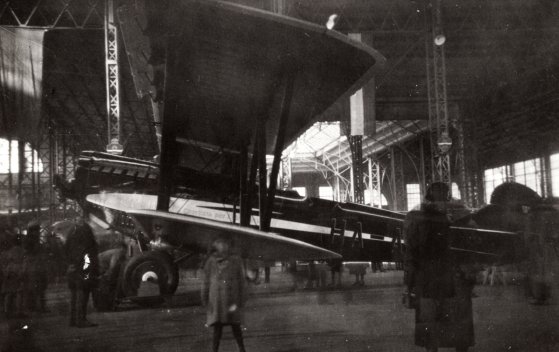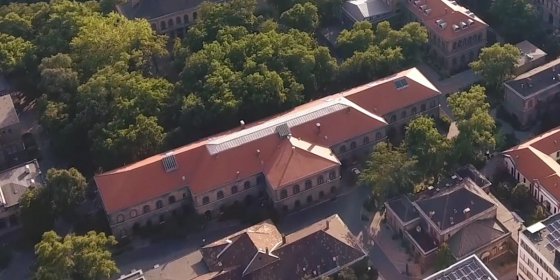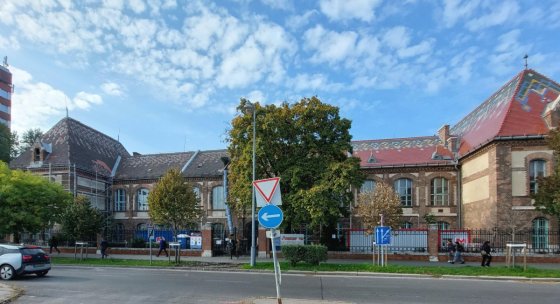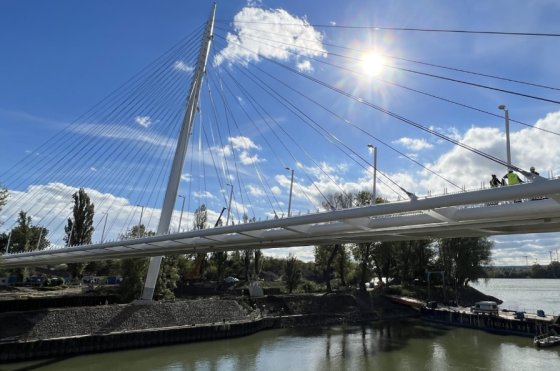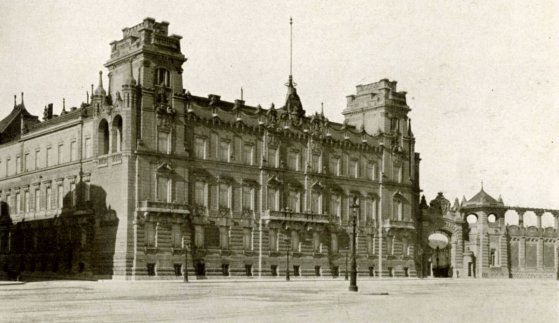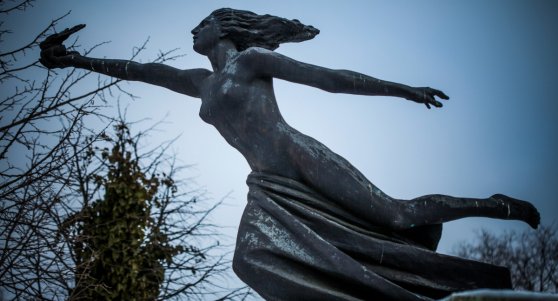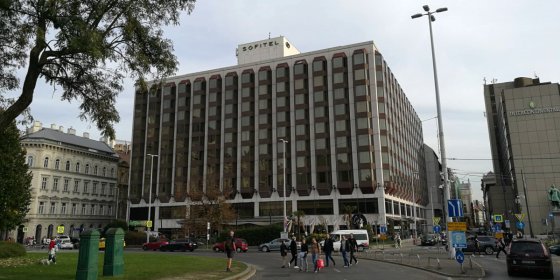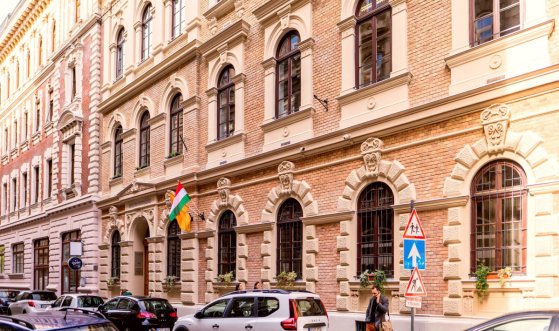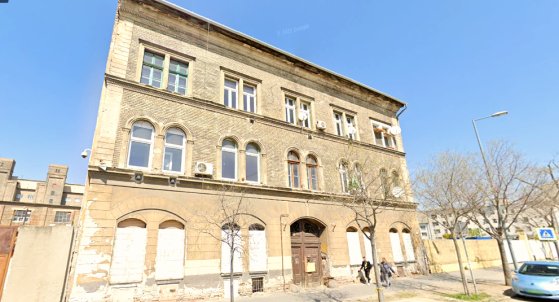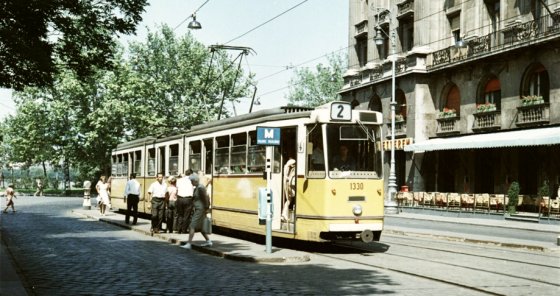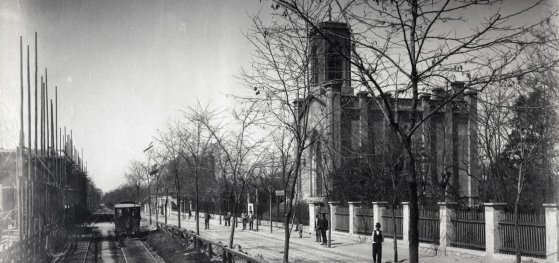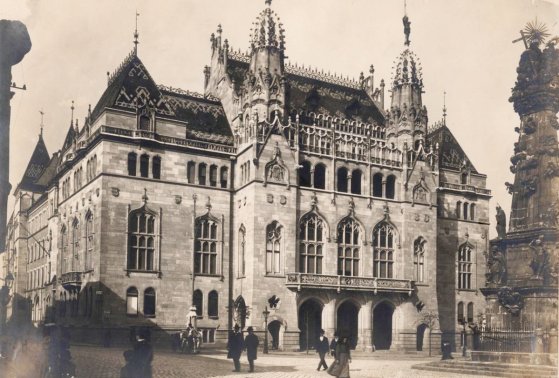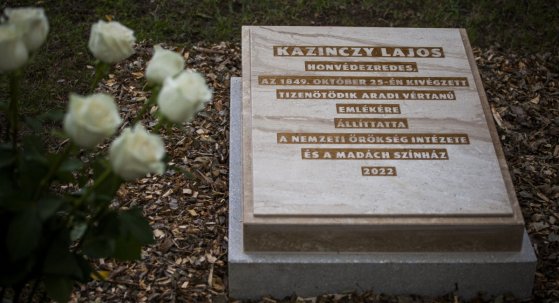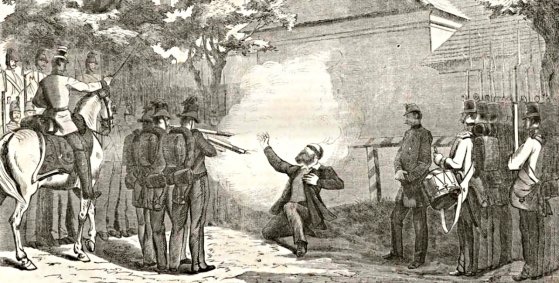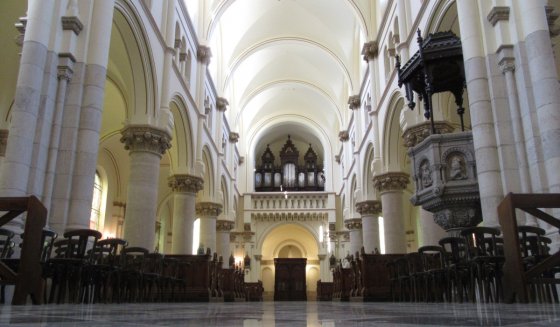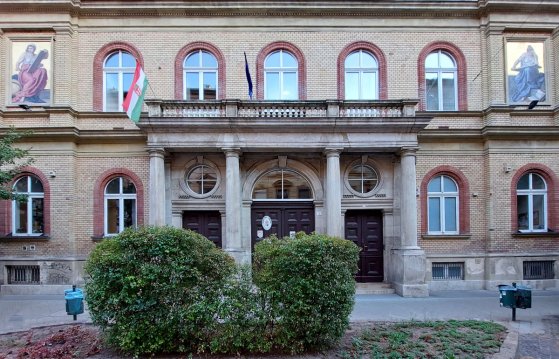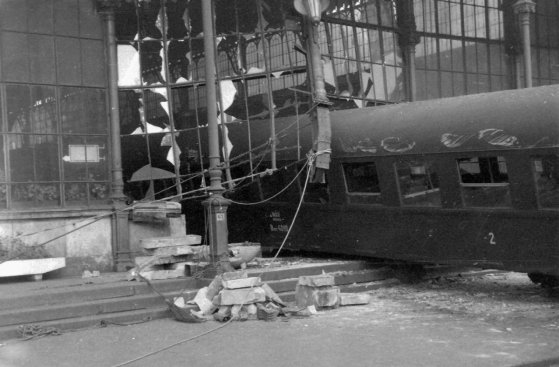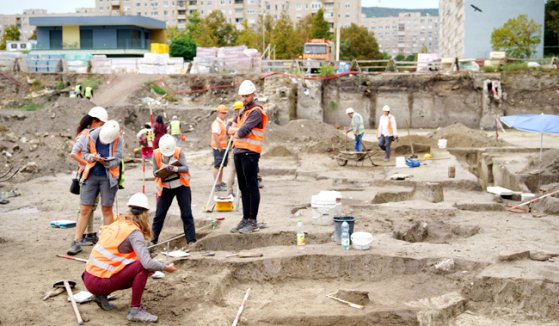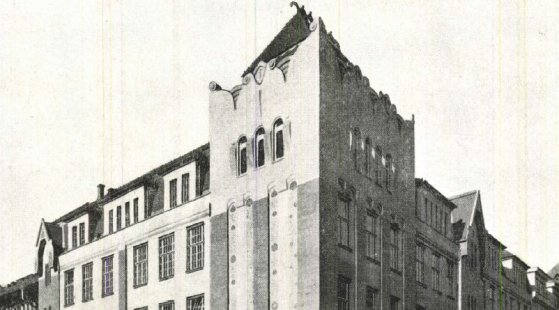 The „intertwined history” of the bridges and the city of Budapest
Which ideas and events have shaped the fate of bridges of Budapest and the cityscape? Alongside many other interesting facts, this question is also answered this newly published book by the Budapest City Archives, which introduces the history of bridges in Budapest.
The „intertwined history” of the bridges and the city of Budapest
Which ideas and events have shaped the fate of bridges of Budapest and the cityscape? Alongside many other interesting facts, this question is also answered this newly published book by the Budapest City Archives, which introduces the history of bridges in Budapest.
PestBuda
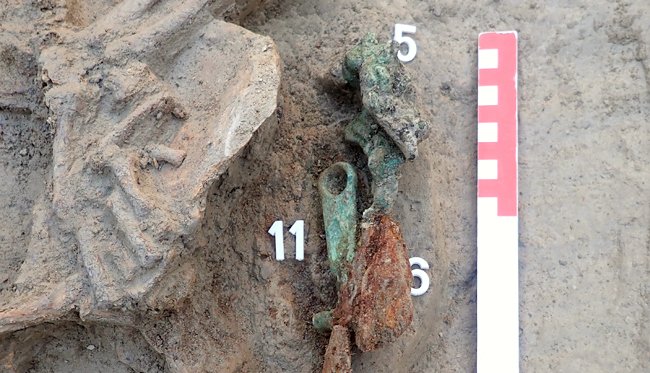 Archaeologists have found a previously unknown site at the border of Csillaghegy
Archaeologists have found a previously unknown site at the border of Csillaghegy
October 20, 2022 at 12:30 PM
Archaeologists came across special finds in the 3rd District, in Pünkösdfürdő Street: prehistoric-, Roman-, migration- and Avar-era monuments were found in the same place. A 6th-7th-century grave was found here, in which the buried woman had a string of glass beads around her neck, a bronze ring on her temple, and a bronze ring on her right hand. Other valuable objects of use were also found on the site from several periods.
Are we overusing Margit Island? - The capital would reduce the number of visitors
October 19, 2022 at 7:00 PM
Margit Island is currently overused and needs to be quieted down, believes the Budapest City Council, which wants to strengthen the recreational park character of the much-loved part of Budapest. They want to achieve quietness by amending legislation: the capital decree on the use of public spaces is planned to be changed in such a way that fewer people can use the services provided on the island.
Frigyes Podmaniczky, who managed the development of Budapest, died 115 years ago
October 19, 2022 at 12:30 PM
He was one of the most important figures in the history of Budapest, who devoted all his energy to the development of the capital. Baron Frigyes Podmaniczky managed the Public Works Council for more than thirty years, essentially everything that we now consider Budapest's architectural and cultural heritage was built during his time. He played a decisive role not only in the development of the city but also in the theatre world. Perhaps the most popular person in Budapest, who worked for the city until his death, died 115 years ago.
Stone lions returned to the Buda bridgehead of the Chain Bridge
October 18, 2022 at 2:00 PM
The lions decorating the Buda bridgehead of the Chain Bridge have been beautified and returned. The four sculptures made by János Marschalkó were transported to a restorer's workshop last August, in connection with the renovation works of the Chain Bridge, from which two have now returned cleaned and repaired. Their final fixation takes several weeks. Citizens have to wait a few more weeks for the lions of the Pest bridgehead.
Farewell to the Ikarus 200 – They defined the streetscape of Budapest for 50 years
October 18, 2022 at 9:00 AM
Budapest will soon say goodbye to a legend that defined the image of the city for decades. BKV is preparing to withdraw the last pieces of a bus family that was perhaps the most important bus type in the world at one time. The Ikarus 200s are leaving after fifty years.
An exhibition was opened on the 150th anniversary of the construction of the Honvédmenház
October 17, 2022 at 7:30 PM
150 years ago, in the fall of 1872, on Soroksári Road in the 9th District, the nursing home built for the elderly disabled and destitute soldiers who took part in the 1848-49 revolution and war of independence was opened. Its task was to provide and care for veteran soldiers. The last veteran died in the building, designed by Ödön Lechner and Gyula Pártos, in 1928. An exhibition about the regiment of Lajos Kossuth has just opened in the Ferencváros Local History Collection.
Sculptor József Damkó was born 150 years ago - His works can be admired all over the capital
October 17, 2022 at 2:00 PM
Undeservedly little is said about sculptor József Damkó, even though the artist produced many works that stand at important points in the Hungarian capital. Such is the statue of Saint Elizabeth of the House of Árpád on Rózsák Square, the statue of St. John of Capistrano on Kapisztrán Square in Buda Castle or the statue of Pope Innocent XI on Hess András Square. His architectural sculptures and tombstones are also of considerable value. Pestbuda now presents the Budapest works of József Damkó on the 150th anniversary of his birth.
The foundation stone of the synagogue in Újlak was laid 135 years ago
October 16, 2022 at 2:00 PM
When the synagogue on Frankel Leó Road - then Zsigmond Street - was built, it was referred to as the Jewish church in Újlak. Its designer was Sándor Fellner, the creator of the Ministry of Finance in Buda Castle. The synagogue in the 2nd District is no longer seen as it was at the time of its construction since it has since been surrounded by a residential building.
The church and monastery were turned into a place of entertainment - the Castle Theatre opened 235 years ago
October 16, 2022 at 9:00 AM
One of the characteristic buildings of the Buda Castle is the Carmelite monastery, which has been used by the Prime Minister's Office for almost four years. The eponymous order of monks was actually forced to withdraw from the walls a long time ago, precisely 235 years ago, their church was turned into Castle Theatre. The ruthless intervention also greatly affected the building itself, but it was mostly then that the image that is known today was formed.
The renovation and expansion of the Hungarian National Archives are delayed
October 15, 2022 at 5:00 PM
The public procurement call for the construction of the headquarters of the Hungarian National Archives has been withdrawn, so it is not yet known when the renovation of the Bécsi Kapu Square building, the appropriate expansion of Samu Pecz's original plans and the rebuilding of its iconic tower, which was demolished after the war, can begin.
Miracle aeroplanes in the Industrial Hall - The pilot of the Justice for Hungary plane crossed the ocean but crashed in Rome
October 15, 2022 at 11:00 AM
Those who bought tickets to the György Endresz Aviation Exhibition 90 years ago were able to get an insight into the real world of aviation, because not only could they see the planes on the ground, but the lucky ones could also win flights. The exhibition, which opened on 15 October 1932, also commemorated the unfortunate Hungarian transatlantic pilot, György Endresz.
The renovation of the Neo-Renaissance building complex of the University of Veterinary Medicine begins
October 14, 2022 at 7:00 PM
The development of the István Street campus of the University of Veterinary Medicine will begin soon. Several of the buildings on the campus, designed by Imre Steindl, will be renovated. Buildings with a patina are modernised, and their interiors and facades are renovated while preserving historic values.
The roof structure of the University of Technology monument building is being renovated
October 14, 2022 at 1:00 PM
Scaffolding has already been erected for the Danube-bank monument building of the Faculty of Mechanical Engineering of the University of Technology, and the renovation has begun. The two-story building designed by Samu Pecz is located south of the central headquarters of the university. The reconstruction of the roof on the northern side of the building was already completed, and now the restoration work has started on the other side as well.
The footbridge connecting Csepel to Pest is structurally ready
October 13, 2022 at 5:30 PM
The Robinson Bridge, which connects Csepel with the Pest side, starting from the Ferencváros athletics stadium, is already structure-ready.
Archaeologists also found a silver denarius of King Matthias during the reconstruction of Archduke Joseph's palace
October 13, 2022 at 2:00 PM
During the construction of the reborn Archduke Joseph's palace on Buda Castle's Szent György Square, the archaeological excavation brought several special features to the surface: the specialists found an almost intact copper jug from the Turkish era, a silver denarius of King Matthias, and valuable ceramic and glass materials. They also found the passage that led to a cellar created from a natural rock cave. The room was probably used in the Middle Ages.
More works of art can be seen in the Fiumei Road Cemetery
October 12, 2022 at 3:30 PM
In the Fiumei Road Cemetery, a description of new tombstones of significant artistic value and their creator can be read with the help of a QR code. The statue of Andor Miklós' mausoleum and the tomb of Béla Pállik are among the twenty monument descriptions that have just been included in the institution's Sculpture Park program.
The hotel on the site of the former Lloyd Palace is being rebuilt
October 12, 2022 at 9:00 AM
Due to the ravages of World War II, Pest's Danube Promenade lost its former unique atmosphere. Modern hotels have been built in place of the old row of palaces, and the Atrium Hyatt has stood on the site of the destroyed Lloyd Palace since 1982, which today bears the name Sofitel. The hotel will soon receive a new facade, the building permit became final at the beginning of October. It can be read in the permit that the building will get a new level. Design renders have not yet been released.
The facade of the music school in Terezváros has been beautified
October 11, 2022 at 7:00 PM
The facade of the Aladár Tóth Music School, located in the historic environment at 19-21 Szív Street in the 6th District, has been renovated. The prestigious building was built in 1874 based on the designs of Frigyes Feszl. The courtyard shared with the Erkel school is also being transformed.
House demolitions in the capital
October 11, 2022 at 5:30 PM
Several demolition permit procedures have been initiated in Budapest in recent months, which affect the historic part of the city or other interior areas important from a cityscape point of view. Pestbuda has selected from these.
Industrial articulated trams in the capital: Hungarian tram production ended with them
October 11, 2022 at 11:00 AM
Budapest is the city of trams. The capital would be unimaginable without the long yellow vehicles. An incredible number of types have worn the rails over the past 140 years, but few vehicles have been as defining as the industrial articulated tram.
A romantic jewellery box in Zugló - The construction of the Hermine Chapel began 180 years ago
October 10, 2022 at 5:00 PM
One of the typical buildings on Hermina Road, which marks the eastern border of City Park, is the small Hermina Chapel. Despite its size, it has a very decisive role, as not only the road was named after it, but also the district where it stands: Herminamező. In keeping with its style, its story is also romantic, containing both beauty and tragedy. The foundation stone of the small chapel was laid just one hundred and eighty years ago.
The state-owned villa in Vérhalom Square, where Árpád Göncz lived, was auctioned
October 10, 2022 at 2:00 PM
The two-story villa at 7B Vérhalom Square in the 2nd District, where the former President of the Republic, Árpád Göncz and his wife lived, was sold for 833 million HUF. Bidding at the online auction of Hungarian National Asset Management Inc. ended late on Saturday, and the winner offered several hundred million forints more than the asking price.
The Palace of the Ministry of Finance was completed 115 years ago
October 7, 2022 at 9:00 AM
It is lesser known that on 7 October 1907, the construction works of the Ministry of Finance's Szentháromság Square palace were completed. The significant construction work took place between October 1901 and December 1904, but the post-construction work continued until October 1907. And several pivotal dates are connected to the construction itself.
The memorial site of the 15th martyr of Arad, Lajos Kazinczy, was inaugurated in the Fiumei Road Cemetery
October 6, 2022 at 2:00 PM
The National Heritage Institute and the Madách Theatre set up a memorial in honour of the fifteenth Arad martyr, Lajos Kazinczy, in the Fiumei Road Cemetery. The son of the language reformer Ferenc Kazinczy was executed on 25 October 1849 in Arad. The parcel of the soldiers who died in the 1848-49 War of Independence can be found in the Fiumei Road Cemetery, as well as the tombstones of three Arad widows.
The Pest stations of a life: A tragic fate that befell Lajos Batthyány
October 6, 2022 at 10:00 AM
On 6 October, Hungarians remember not only the 13 generals of the army executed in Arad, but also Count Lajos Batthyány, the martyred Prime Minister of Hungary's first responsible government, who was executed in Pest, in the courtyard of the New Building. An eternal flame has stood at the place of the execution since 1926, a worthy memorial to the count, who gave his life for Hungarian freedom. Batthyány, who became the leader of the opposition during the reform era, moved to Pest in 1841, visited many notable places in the capital, and Pestbuda now collected these on the tragic anniversary.
The Bakáts Square Church designed by Miklós Ybl has been completed
October 5, 2022 at 6:30 PM
The renovation of the Bakáts Square Church in Ferencváros has been completed. With the expansion of the crypt, a new urn burial section was created, the church received a new floor covering, the plaster was restored and restoration work was carried out. The new altar was also consecrated at the weekend.
Imre Madách Secondary School moved into its current home 130 years ago
October 5, 2022 at 11:00 AM
In September 1892, the 7th District State Secondary School, i.e., today's Imre Madách Secondary School, welcomed not only the new academic year but also its new home. The institution, founded in 1881, did not have its own building for more than 10 years, teaching took place on rented premises. The Minister of Religion and Public Education in charge of educational affairs, Ágoston Trefort, commissioned the architect János Bobula Sr. to prepare the plans for the secondary school. But Trefort passed away in the meantime, and the new minister had other ideas about the school building.
A railway carriage got out of control and ended up on the Outer Ring Road
October 4, 2022 at 10:30 AM
Sixty years ago, on 4 October 1962, a railway carriage tore through the buffer stop of the main hall of the Nyugati (Western) Railway Station, breaking through the glass wall and running onto the Outer Ring Road. The accident was caused by human error, but thanks to the presence of mind of a railwayman, there was no mass catastrophe.
A drainage ditch system of Bronze Age origin was found in the area of Buszesz in Óbuda
October 3, 2022 at 6:30 PM
During the archaeological excavation in the area of the former distillery, Buszesz, a drainage protection structure of prehistoric origin was identified under the Roman layers in Óbuda. The ditch system ensured flood protection. Pile holes, storage and waste pits belonging to former buildings were also found.
110-year-old neighbours - The twins of the big school building campaign
October 3, 2022 at 2:00 PM
Fortunately, there are many architecturally valuable school buildings in Budapest. A significant part of them was created in a very short period, in just three years: the Capital implemented a large school building program between 1909 and 1912. Many well-known alma maters were born at this time, but Pestbuda now presents two less famous examples of this fertile era.
More articles
 The „intertwined history” of the bridges and the city of Budapest
Which ideas and events have shaped the fate of bridges of Budapest and the cityscape? Alongside many other interesting facts, this question is also answered this newly published book by the Budapest City Archives, which introduces the history of bridges in Budapest.
The „intertwined history” of the bridges and the city of Budapest
Which ideas and events have shaped the fate of bridges of Budapest and the cityscape? Alongside many other interesting facts, this question is also answered this newly published book by the Budapest City Archives, which introduces the history of bridges in Budapest.
 The Bridge Report, which brought a turning point in the history of Budapest
A travel report that changed the history of Pest and Buda, as well as Hungary. The little book contributed to the change of half a thousand years of legal customs and the implementation of an investment of unprecedented size and technical quality. This book was The Bridge Report [Hídjelentés in Hungarian].
The Bridge Report, which brought a turning point in the history of Budapest
A travel report that changed the history of Pest and Buda, as well as Hungary. The little book contributed to the change of half a thousand years of legal customs and the implementation of an investment of unprecedented size and technical quality. This book was The Bridge Report [Hídjelentés in Hungarian].
 Drama on the university wall - The heroic monument was planned 95 years ago
In the constant hustle and bustle of the Egyetem Square in Pest, the students may not even notice the monument that decorates the short section of wall between the church and the central building of ELTE. However, it commemorates their predecessors, the heroes who fought for their country in World War I, and those who heroically helped them. The first design of the dramatically collapsing soldier was born in 1928, ninety-five years ago.
Drama on the university wall - The heroic monument was planned 95 years ago
In the constant hustle and bustle of the Egyetem Square in Pest, the students may not even notice the monument that decorates the short section of wall between the church and the central building of ELTE. However, it commemorates their predecessors, the heroes who fought for their country in World War I, and those who heroically helped them. The first design of the dramatically collapsing soldier was born in 1928, ninety-five years ago.


